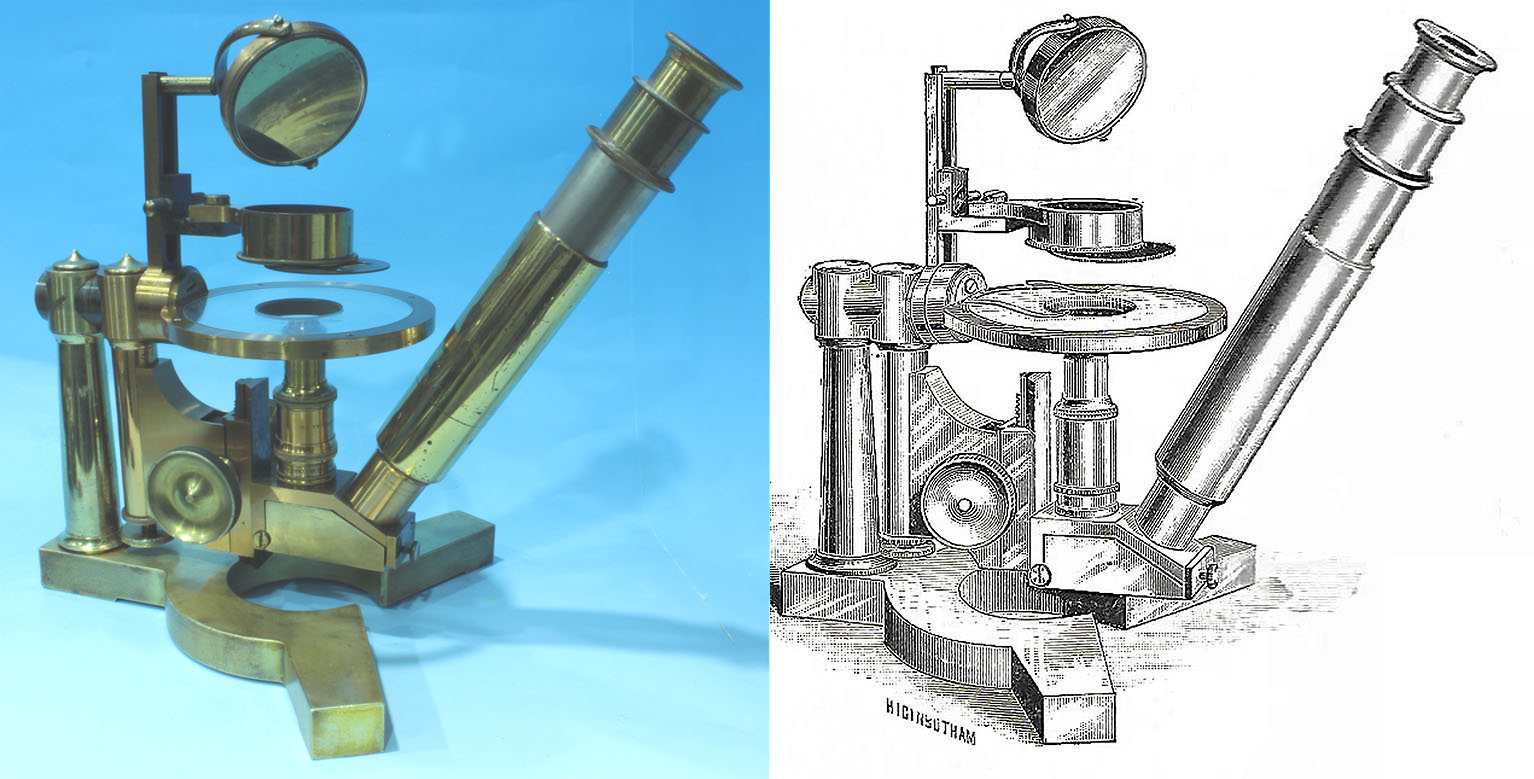UNIVERSITY MICROSCOPE
| DESCRIPTION | CONDITION | HISTORY |
Please Click On Pictures for a Larger Version Where Available
Combined Invertible and Vertical Microscopesin 1886, the
LaboratoryModel and, as featured on this page, the heavier and slightly more expensive
Universitymodel. Both these microscopes are extremely rare today.
Concentricmodel. The finish on the foot, like many B & L stands, is a heavy-duty yellowish coating applied over brass, unlike the rest of the microscope that is lacquered brass. There is a brass drawtube which has a nickel-plated draw measuring 3 2/3 inches (93 mm). The distal end of the drawtube is has a hard rubber end that is threaded permitting to addition of e.g. an erecting lens. The foot has a right to left spread of about 7 inches and the instrument stands about 9 inches tall in the inverted configuration. In the upright configuration it is about 14.5 inches high with the drawtube pushed all the way in, and about 18.5 inches high with the drawtube fully extended.
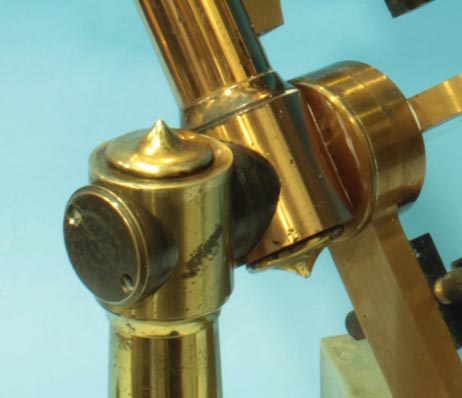
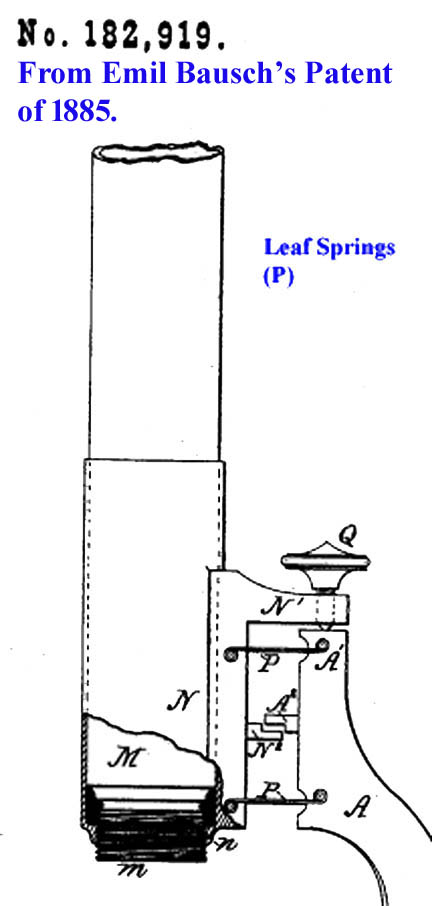
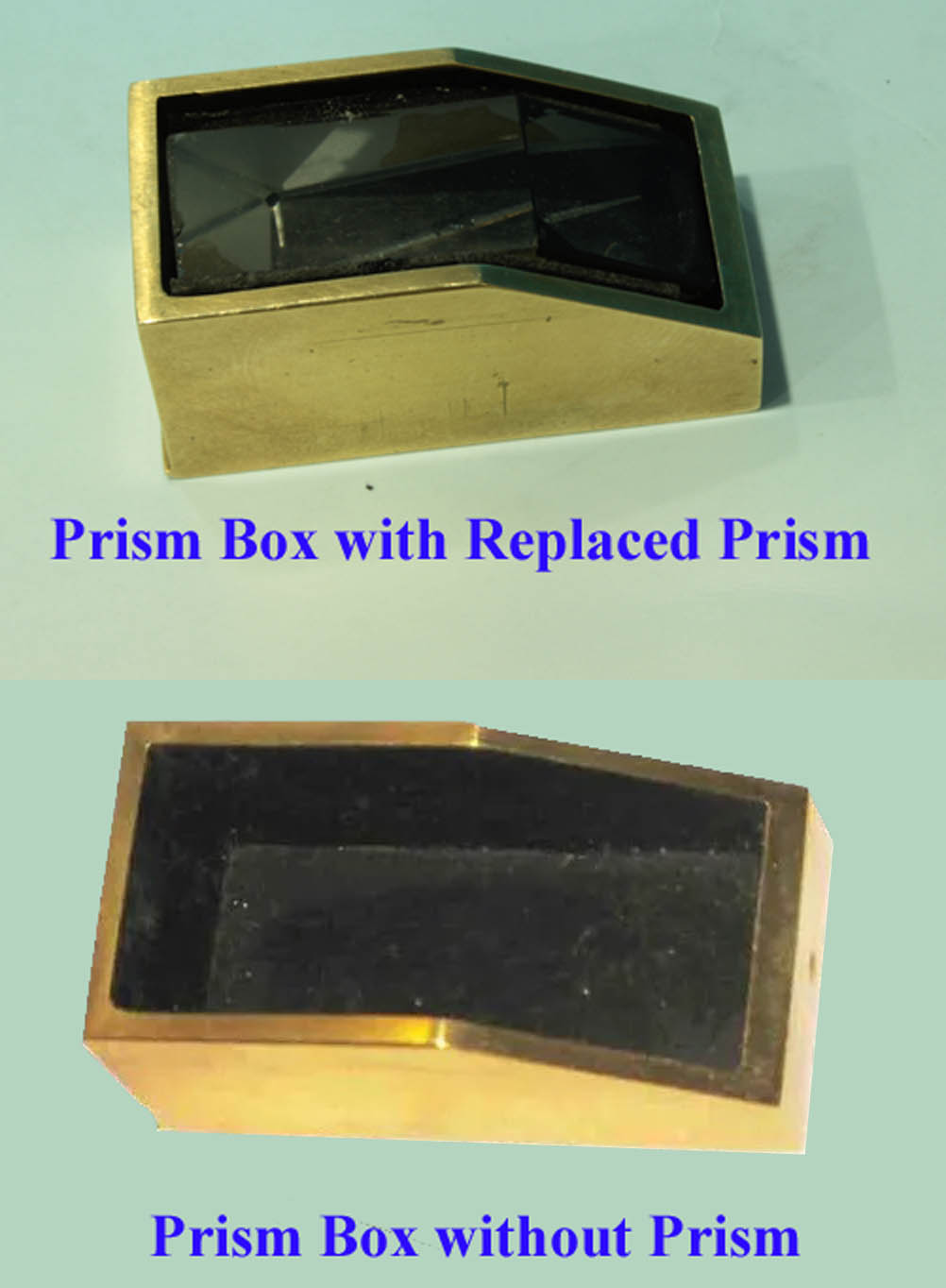
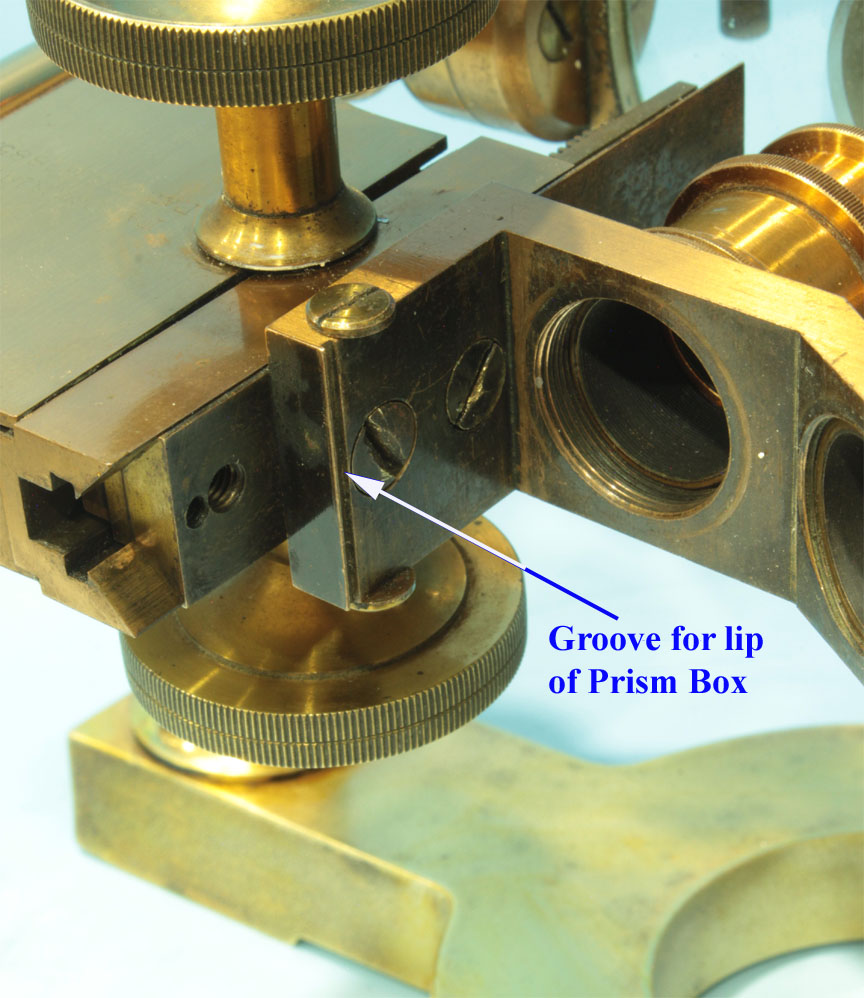
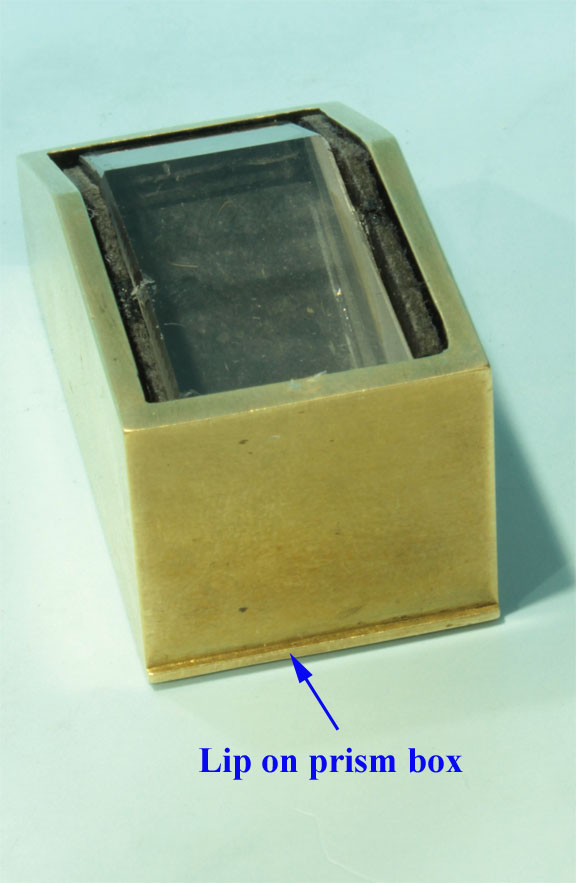

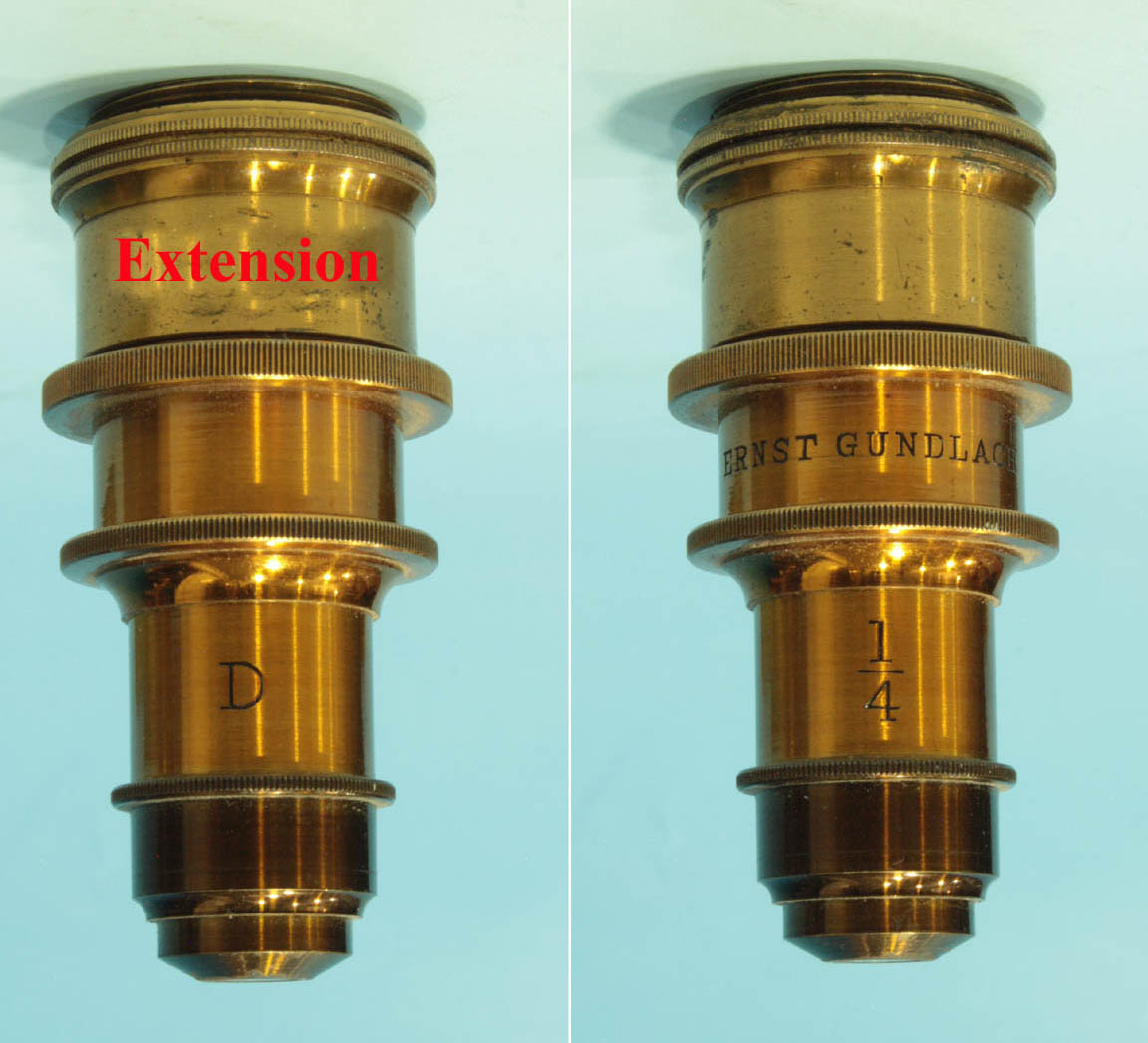 The microscope was received with a single unmarked
The microscope was received with a single unmarked top hateyepiece and a single 1/4 inch Gundlach objective(shown to the right). It is signed D on one side and 1/4 on the other side and below these
Ernst Gundlach. There was a single short lacquered brass extension tube(shown here attached to the objective), between the objective and the prism box bracket that is used to raise the objective sufficiently close to the specimen slide in the inverted configuration; this is needed to bring the front of the objective close enough to the stage to reach focus when in the inverted configuration without the body tube running into the stage. Lacking on receipt were the other extension(s) which are required when using the short focal length Gundlach objective.
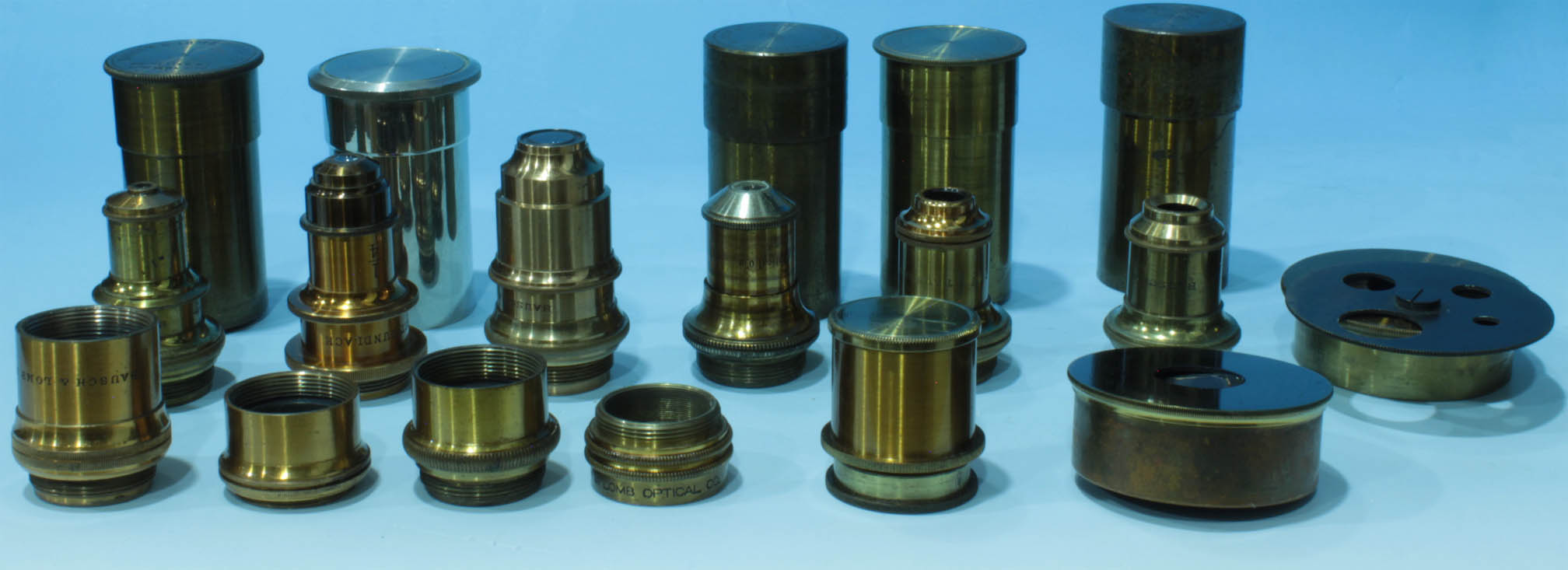
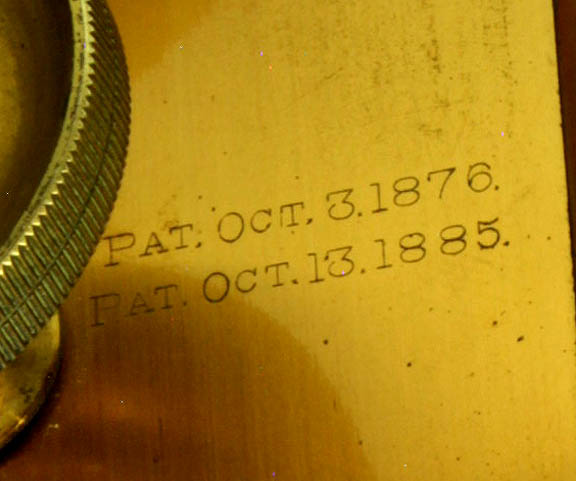
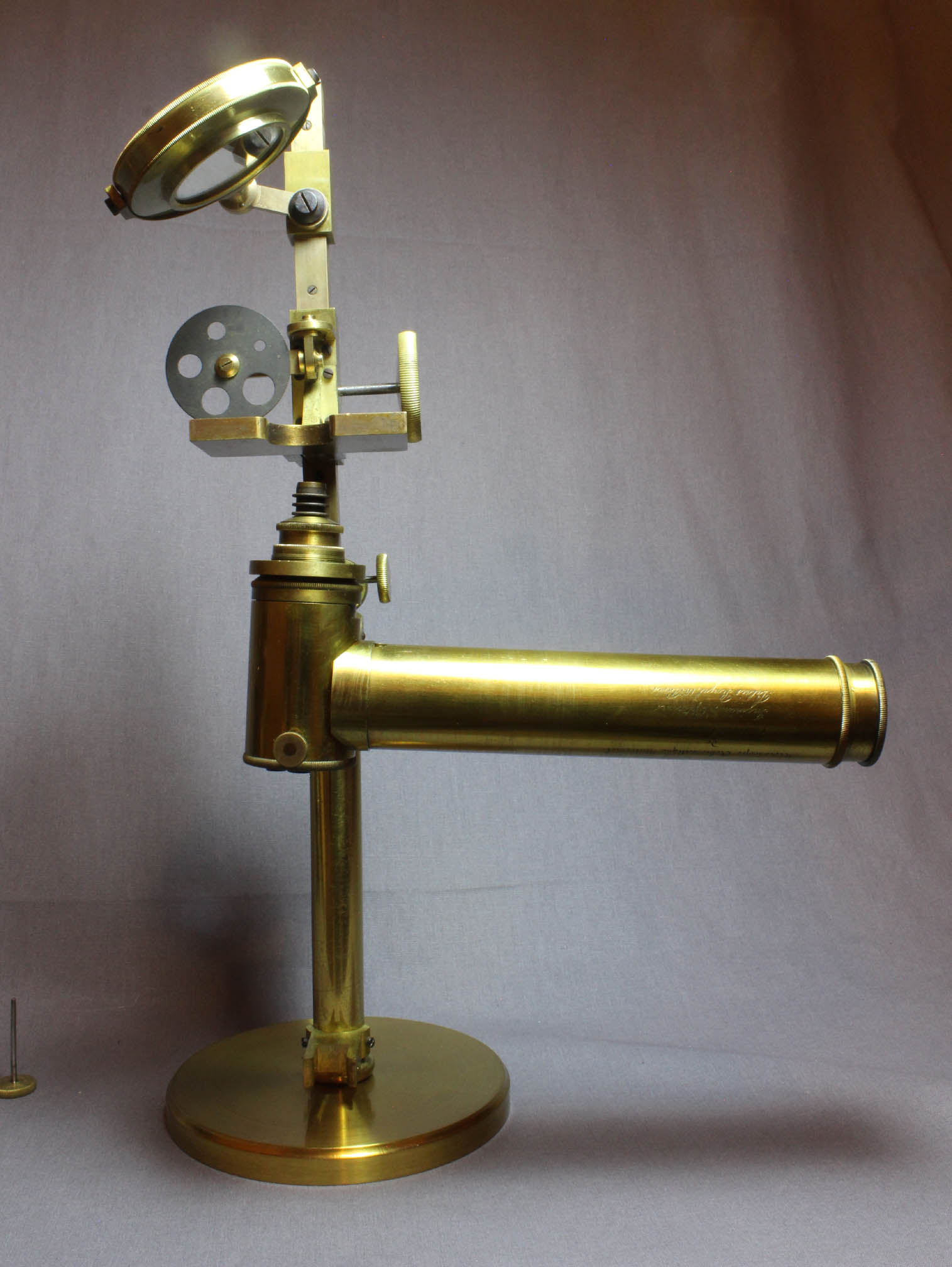
Universal Achromatic Microscopeof Charles Chevalier, dating to about 1840, was also invertible, though the optical tube would be horizontal in this configuration (left).
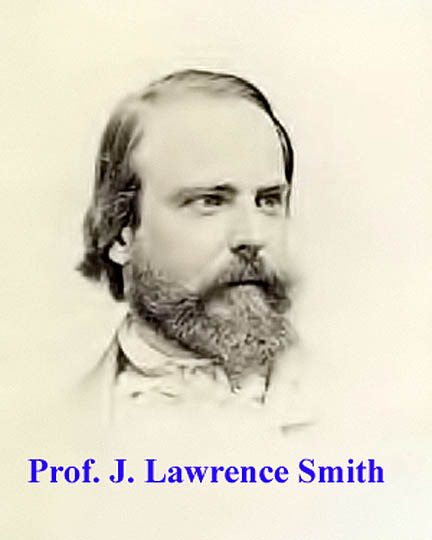 Although Charles Chevalier had produced a microscope that could be set up inverted, the dedicated inverted microscope with the tube oriented at a comfortable angle, and specificly developed for work with chemicals, was suggested by the American Professor J Lawrence Smith, who presented it to the Societe de Biologie of Paris in 1850, and then reported it to the American Scientific Association in 1851. He also reported it in the 1852 issue of the Am J Sci Arts. Vol 14: 233-241.
Although Charles Chevalier had produced a microscope that could be set up inverted, the dedicated inverted microscope with the tube oriented at a comfortable angle, and specificly developed for work with chemicals, was suggested by the American Professor J Lawrence Smith, who presented it to the Societe de Biologie of Paris in 1850, and then reported it to the American Scientific Association in 1851. He also reported it in the 1852 issue of the Am J Sci Arts. Vol 14: 233-241.

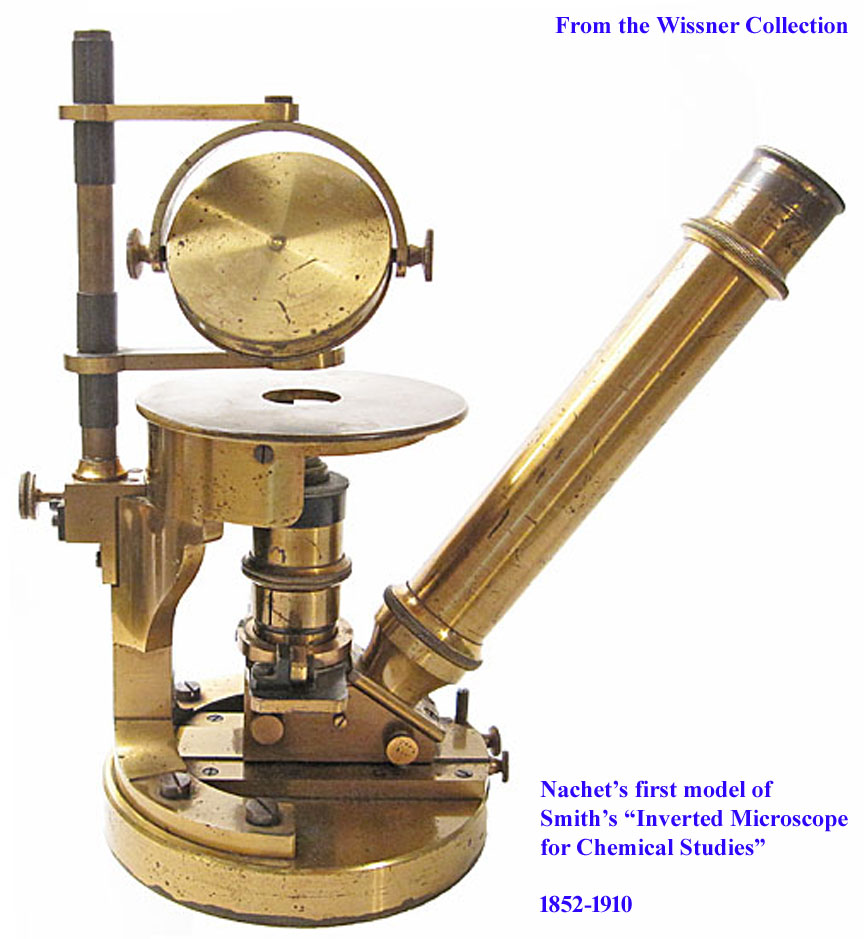
A Practical Treatise on the use of the Microscope,pp 490-492.
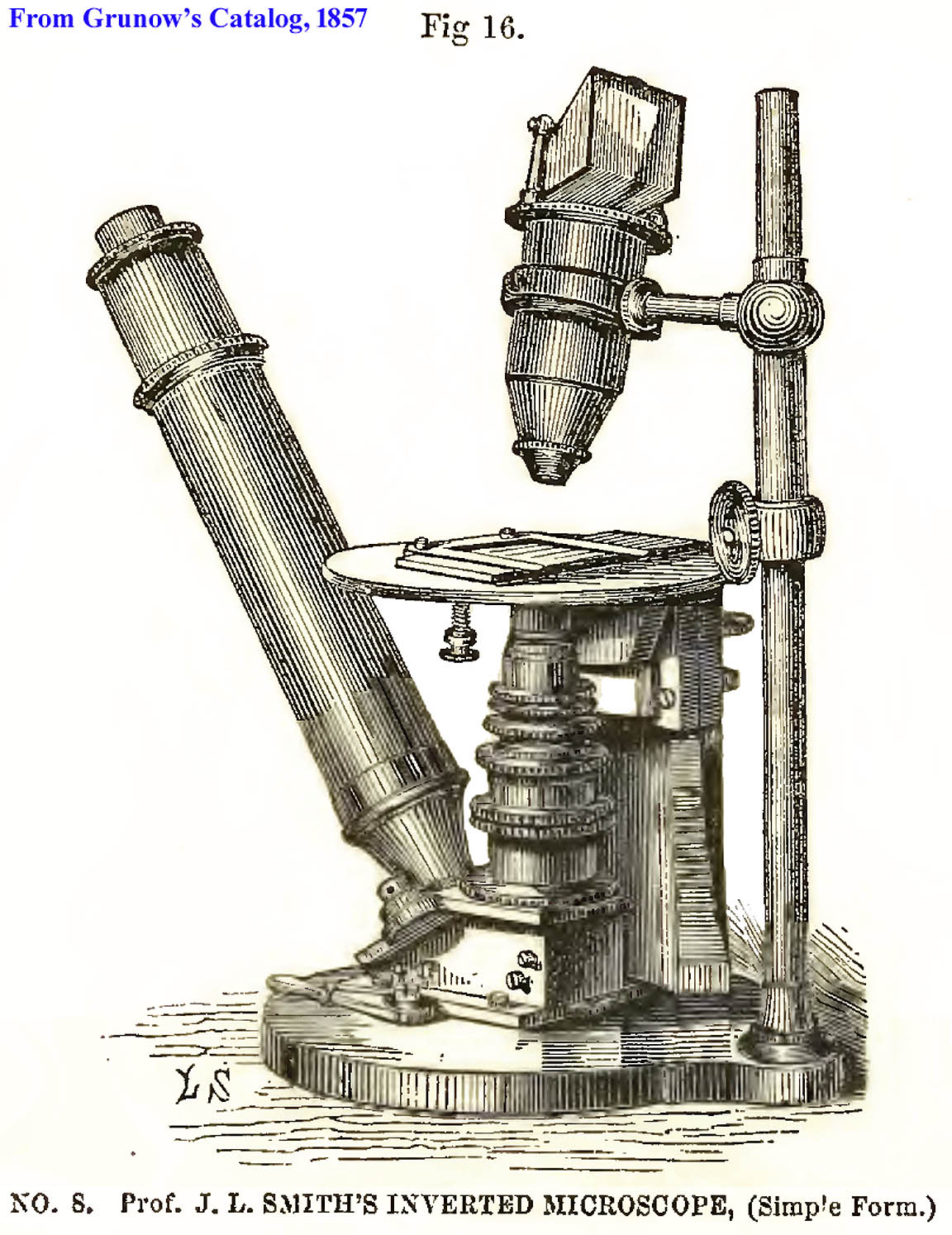
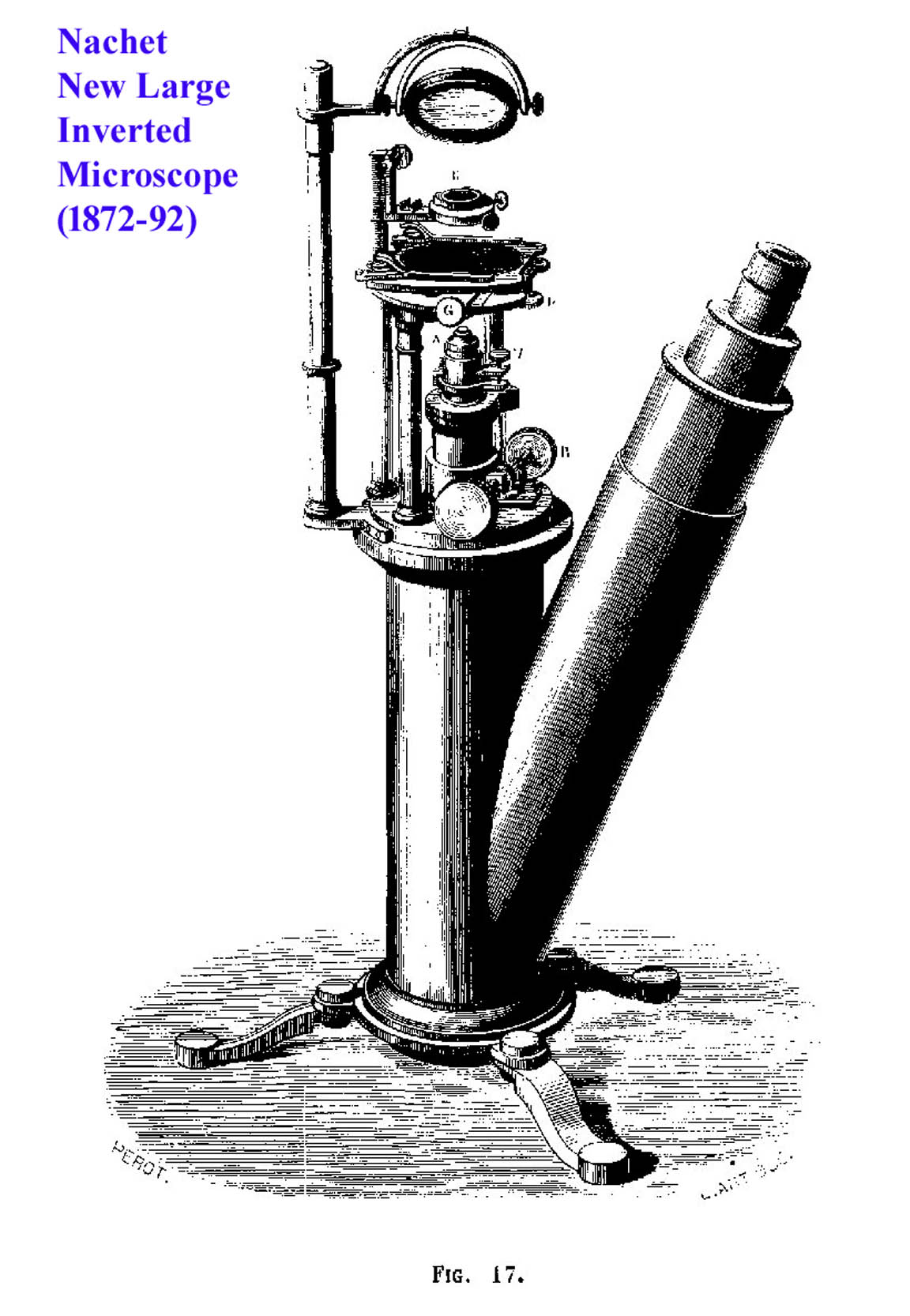
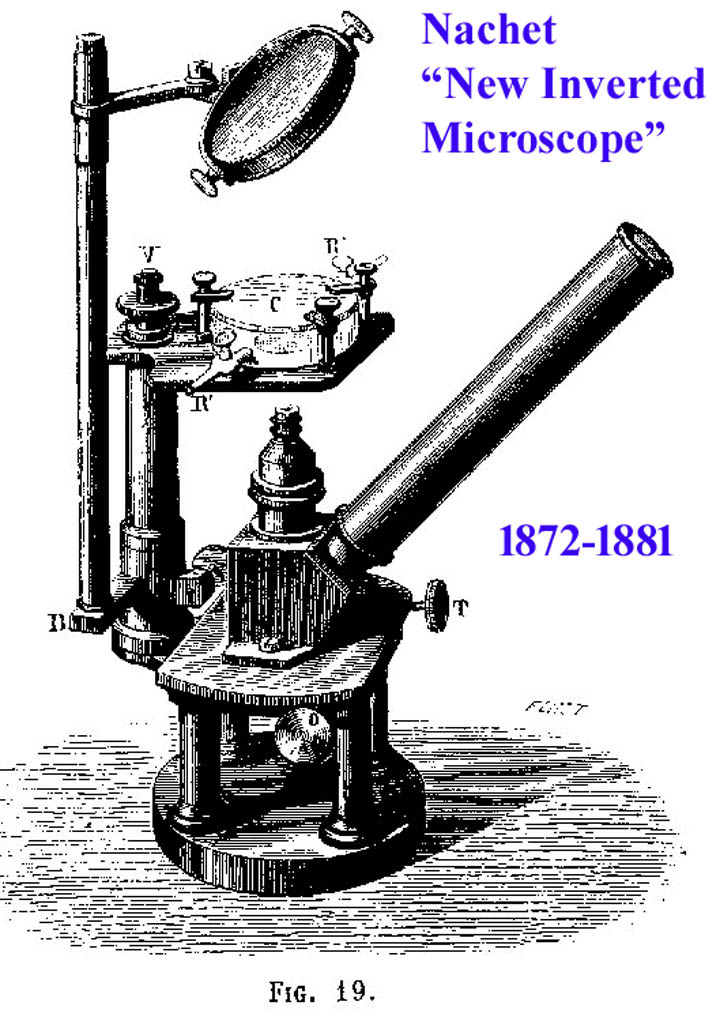
New Large Inverted Model(right) and the smaller
New Inverted Microscope(left). The latter was
...intended for the studies of anatomical elements in gaseous environments and at constant temperature.Coarse focusing was by turning the objective mount and fine focus was via fine screw to the column supporting the stage. Upon the stage was a circular glass cell with a hole in the bottom covered with a thin glass cover attached via Canada balsam. A glass over plate was supplied to cover the top, to be sealed with glycerin to prevent loss of liquid, or a rubber seal to prevent loss of gas. Metal fittings were present to hold the top glass plate firmly against the cell. The microscope was also supplied with a device to maintain a constant temperature of the cell.
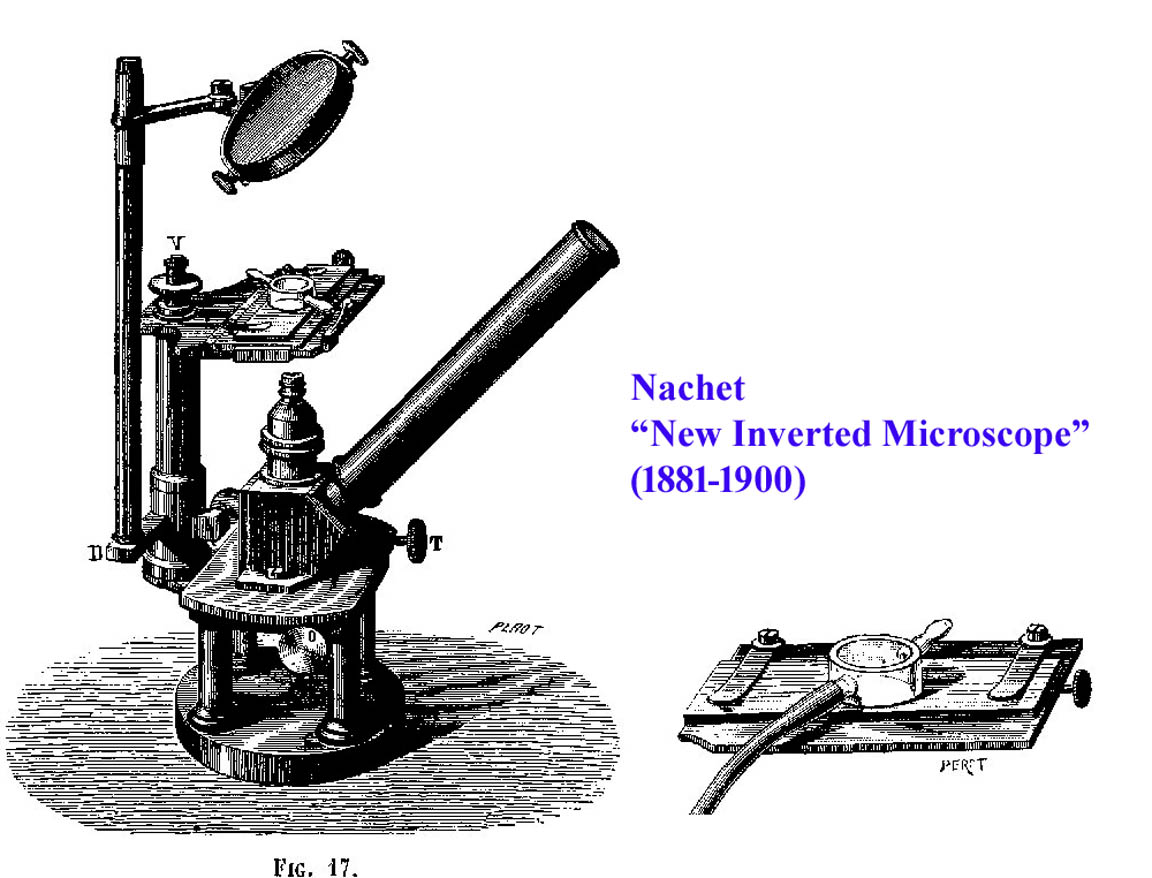
 In was in 1886 Bausch & Lomb introduced their
In was in 1886 Bausch & Lomb introduced their combined inverted and vertical microscopes. Patent number 373,634 was issued to Emil Bausch in 1887. This depicted the
Laboratoryversion of it. The B & L invertible microscopes were first reported in the JRMS in 1887 (pp 141-144) and were offered by B & L from 1886 to 1895 during which time the catalog referred to them as the
Laboratorymodel(double column black foot) and the
Universitymodel(thick single pillar, heavier lead-filled brass foot). The advantage over the inverted microscopes of Grunow 1857 or earlier) and Nachet (as early as 1852 onward) was that unlike these dedicated instruments, designed primarily for chemical work, B & L's forms could easily be converted to a traditionally oriented (
vertical) microscope, thereby allowing subjects to be seen both from below and above. As noted below, this idea actually originated with Charles Chevalier, but because of the angled tube, (rather than horizontal tube in Chevalier's microscope), B & L microscopes were much easier to use. This then might appeal to a wider audience, and certainly reduced the need for a second microscope for ordinary work. The biggest disadvantage of the B & L design was the use of the wear-prone Grunow leaf spring fine focus mechanism which frequently failed.
Laboratory Microscope(left) of the same period except for the University Model having (1)a thick single support pillar instead of two, (2)a larger and heavier foot, and (3)a brass finish throughout (though the foot was not bright-lacquered). After 1895 B & L no longer listed invertible microscopes in their catalogs; they then, confusingly, made an entirely different microscope also called the
Laboratory model, which was of the traditional form, and not invertible, and the University Microscope (not to be confused with their
Universalmicroscope,) was no longer offered.
